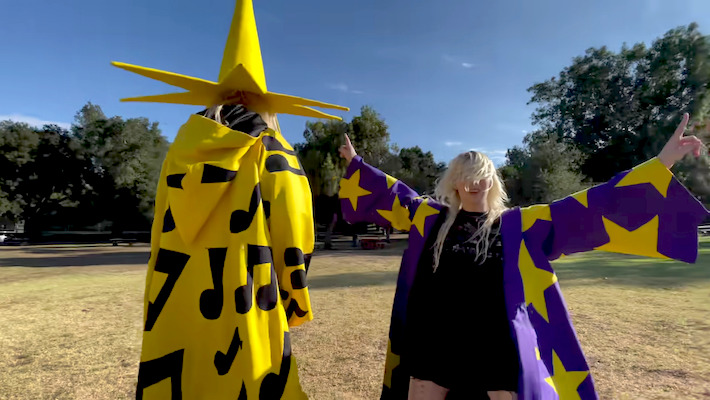Earworm vocals, distortion, and bass are all critical components of hyperpop. For those unfamiliar, hyperpop is the lovechild of gen z internet culture and “scene music” from the 00s. Hyperpop was born out of basements, childhood bedrooms, and a dream. It's the definition of music born on the internet for the internet. Hyperpop accredits its rise in popularity to notable entertainment apps like TikTok and SoundCloud. It gained traction through its rejection of standard music practices, it strayed away from the standard comprehensible lyrics and instead utilizes over-exaggerated melodies. It embraces the “weird kid” aesthetic and is cementing its place for the second wave of scene and emo culture.
When faced with the task to define “hyperpop” to people who aren’t familiar I am always stumped on where to begin as it’s a truly enigmatic genre. Appearing to borrow heavy influence from the bright flashy harmonious elements of y2k cyber rave culture, synthesized with the darker lyrical elements of scene and emo from the 00s. Similar to vaporwave, it's one of the few known genres of music to be born out of the internet and it became an amalgamation of widespread internet culture spread through the years. Hyperpop quickly became 15-30 second sound bites for young people on TikTok to make outfit edits to.
Internet traction began to build as more and more aliases began to experiment with the growing genre. Major names in the game are Bladee, Ecco2K, Aldn, 100 gecs, i9Bonsai, A.G. Cook, and Charli XCX.
As hyperpop continues to snowball into fame, it perpetually continues to prove itself as today's genre of music for the modern gen z music listener. While many find the sound to be jarring to the ears, I have found a strange comfort within this niche genre. While we can’t exactly transport back into the 00s and log into Myspace to relive the days of the dawn of the internet, we can tune into new artists experimenting and pushing the boundaries of computer music.

Bladee and Ecco2K

100 gecs
Comments
Post a Comment